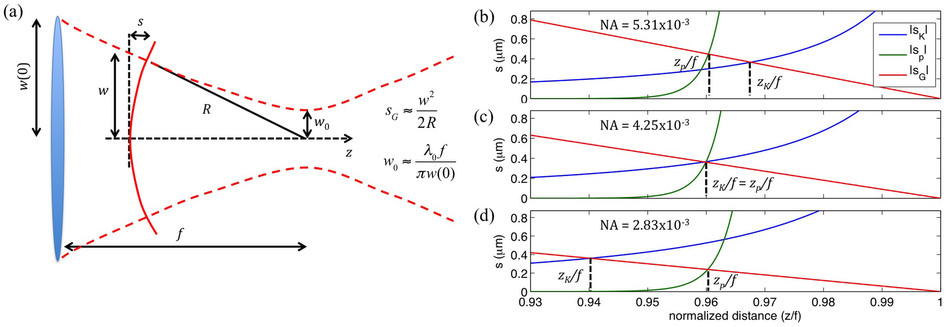A paper titled “Transition from linear- to nonlinear-focusing regime in filamentation” by Khan Lim, Magali Durand, Matthieu Baudelet and Martin Richardson has been published in Nature’s Scientific Reports.
Laser filamentation in gases is often carried out in the laboratory with focusing optics to better stabilize the filament, whereas real-world applications of filaments frequently involve collimated or near-collimated beams. It is well documented that geometrical focusing can alter the properties of laser filaments and, consequently, a transition between a collimated and a strongly focused filament is expected. Nevertheless, this transition point has not been identified. Here, we propose an analytical method to determine the transition, and show that it corresponds to an actual shift in the balance of physical mechanisms governing filamentation. In high-NA conditions, filamentation is primarily governed by geometrical focusing and plasma effects, while the Kerr nonlinearity plays a more significant role as NA decreases. We find the transition between the two regimes to be relatively insensitive to the intrinsic laser parameters, and our analysis agrees well with a wide range of parameters found in published literature.

(a) Illustration of wavefront sag for a focusing Gaussian beam. (b,c,d) Calculations of wavefront sag contribution by KSF (sK), plasma defocusing (sp) and geometrical focusing (sG) for focusing conditions NA = 5.31 × 10−3, 4.25 × 10−3 and 2.83 × 10−3 respectively. The positions zK and zp, where the sag contribution from KSF and plasma defocusing become more significant than that from geometrical focusing, are indicated.
Posted Monday, December 1, 2014